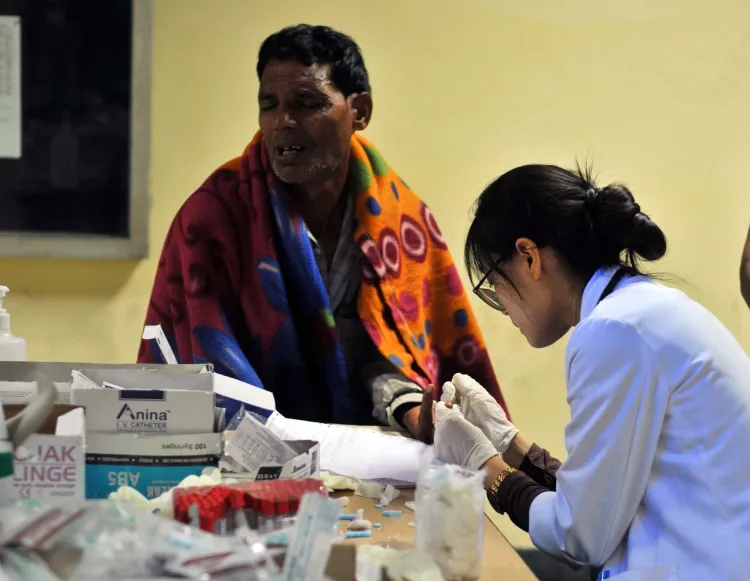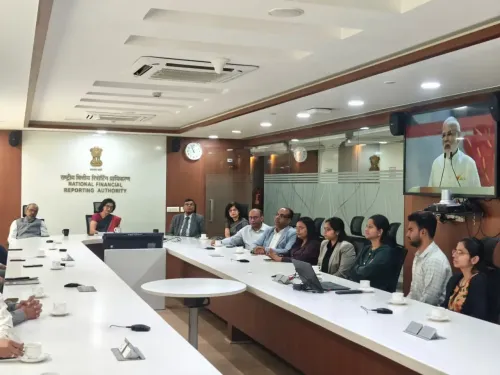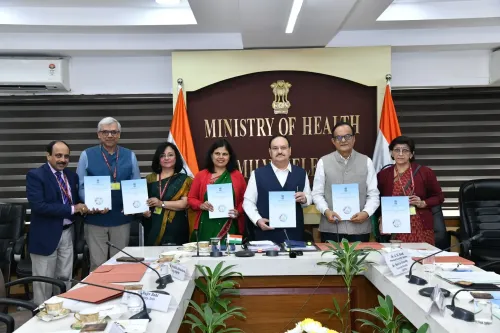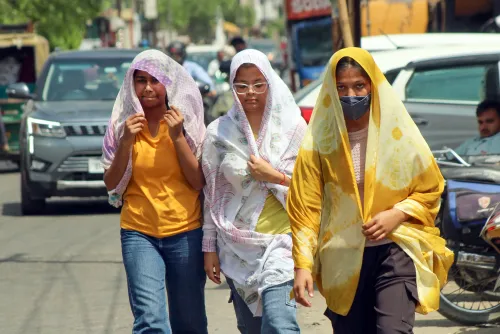What Are the Latest Chikungunya Disease Statistics for 2025?

Synopsis
Key Takeaways
- Over 4.4 lakh chikungunya cases reported globally in 2025.
- 155 deaths associated with the disease.
- Major outbreaks noted in 40 countries.
- India is significantly affected with 30,876 suspected cases.
- Urgent need for strengthening disease surveillance.
New Delhi, Oct 4 (NationPress) The global count has surpassed 4.4 lakh suspected and confirmed chikungunya disease cases, with 155 fatalities reported from January through September 30, 2025, according to the World Health Organization (WHO).
The most recent outbreak report, covering 40 countries, indicates that chikungunya virus (CHIKV) disease has emerged in numerous nations, including some that had not seen significant case numbers recently.
From January 1 to September 30, 2025, a total of 4,45,271 suspected and confirmed cases of CHIKV and 155 deaths were recorded globally across 40 countries, including both locally acquired and travel-related cases, as per the WHO.
The Americas reported the highest incidence with 3,28,920 suspected and confirmed cases, followed by Europe, which noted 56,456 confirmed cases primarily from French overseas territories in the Indian Ocean. This region also accounted for 40 deaths.
In India, from January 1 to March 31, 2025, there were 30,876 suspected cases and 1,741 confirmed cases. The states with the highest confirmed cases were Maharashtra, Karnataka, and Tamil Nadu. Fortunately, no fatalities were reported, according to the WHO.
A recent study published in the British Medical Journal (BMJ Global Health) indicates that over 1.40 crore individuals globally might be at risk of chikungunya infection annually.
Researchers from the London School of Hygiene and Tropical Medicine conducted a global modeling study revealing that India may bear the brunt of chikungunya, potentially exposing 51 lakh people to the mosquito-borne virus each year.
Brazil and Indonesia are predicted to be the second and third most affected countries, with India and Brazil representing 48% of the global burden on healthcare systems and individuals.
The CHIKV disease, transmitted by Aedes mosquitoes, is prevalent in tropical and subtropical regions. Although the fatality rate is low, severe cases can arise, especially among vulnerable groups such as infants, the elderly, and individuals with pre-existing conditions.
While CHIKV is primarily spread by infected female mosquitoes, notably Aedes aegypti and Aedes albopictus, which also transmit dengue and Zika, the virus can be introduced to new areas by infected travelers, leading to local transmission.
The report emphasizes that risks are heightened in previously unaffected regions due to limited immunity, favorable conditions for mosquito breeding, insufficient surveillance, and increased human mobility and trade. Strengthening disease surveillance, enhancing vector control, and improving public health preparedness are essential for mitigating further transmission risks.









